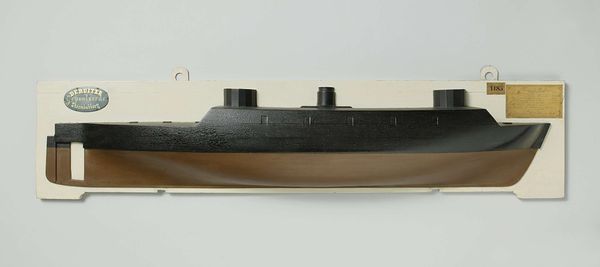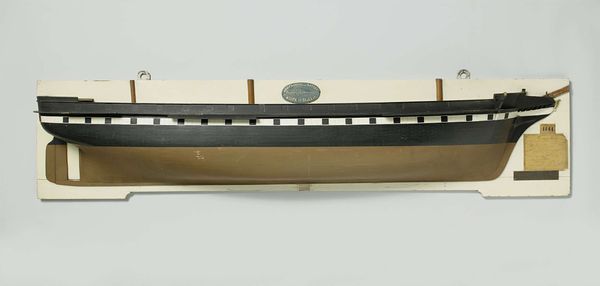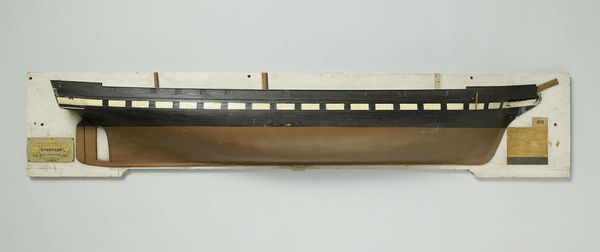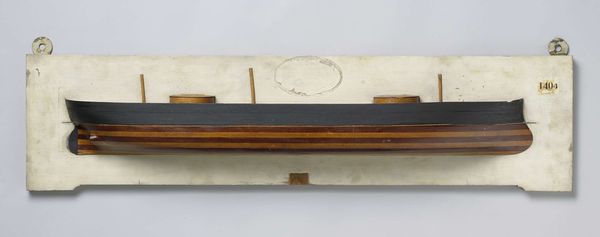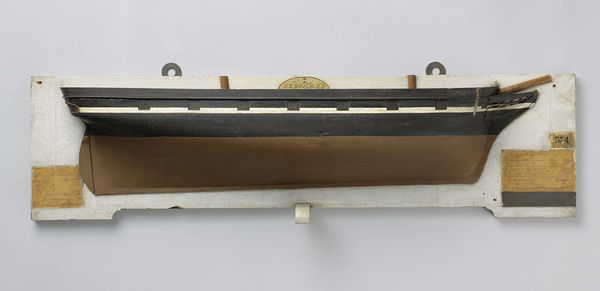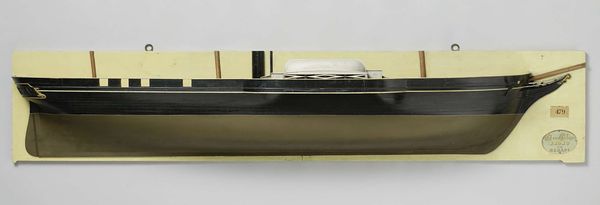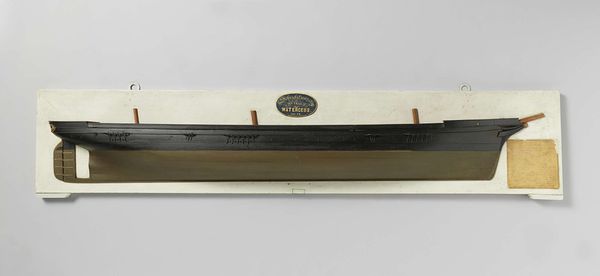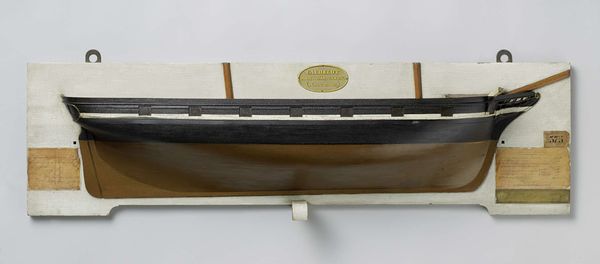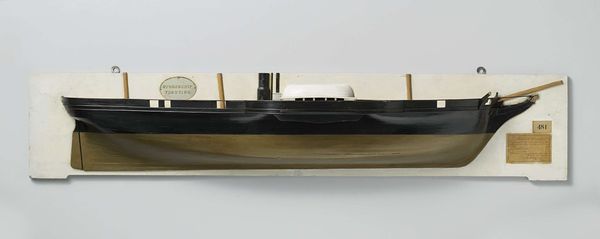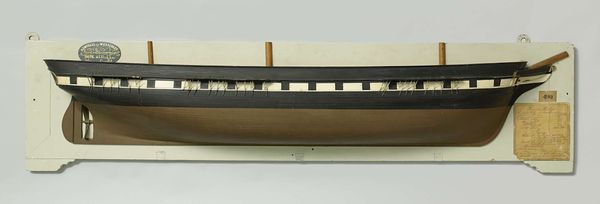
metal, sculpture, wood
#
metal
#
sculpture
#
wood
Dimensions: height 26.5 cm, width 103 cm, depth 8 cm
Copyright: Rijks Museum: Open Domain
Editor: Here we have the "Half Model of a Screw Steamer" crafted in 1885 by the Koninklijke Fabriek voor Stoom- en andere Werktuigen, blending metal and wood. I'm struck by how this utilitarian object is elevated almost to a commemorative plaque. What’s your read on this, viewed through a historical lens? Curator: This isn't just a half model; it’s a statement of industrial power presented as a piece of public art. Consider the socio-economic context of the late 19th century. Factories like the Koninklijke Fabriek weren't simply producing goods; they were emblems of national progress and technological prowess. How might displaying this model have shaped public perceptions of the factory and its role in society? Editor: It feels almost like propaganda. By displaying a "high art" version of what they produced, the factory's message feels like it was to position itself as a driver of modernization, culture, and art—more than just industry. It served multiple purposes by reinforcing its status within both the industrial and public spheres. Curator: Exactly. And note the material choices – wood and metal. They symbolize both the traditional craft of shipbuilding and the burgeoning dominance of industrial technology. Think about the audience for this piece. Was it intended for engineers, investors, or perhaps even potential workers? And how might the message have resonated differently depending on the viewer? Editor: It seems aimed to impress various groups, boosting prestige. It also normalizes industrial advancement. Are we looking at this kind of piece differently now compared to 1885? Curator: Absolutely. Today, we might analyze its environmental impact or the labor practices of the factory. We also examine how this seemingly neutral object promoted a particular ideology. Does that shift change your own perspective? Editor: Definitely. Seeing it through that lens reveals complexities. It's not just a ship model; it’s a carefully constructed narrative about progress. Curator: Precisely. This piece allows us to examine the intricate relationships between industry, art, and the shaping of public opinion.
Comments
No comments
Be the first to comment and join the conversation on the ultimate creative platform.
